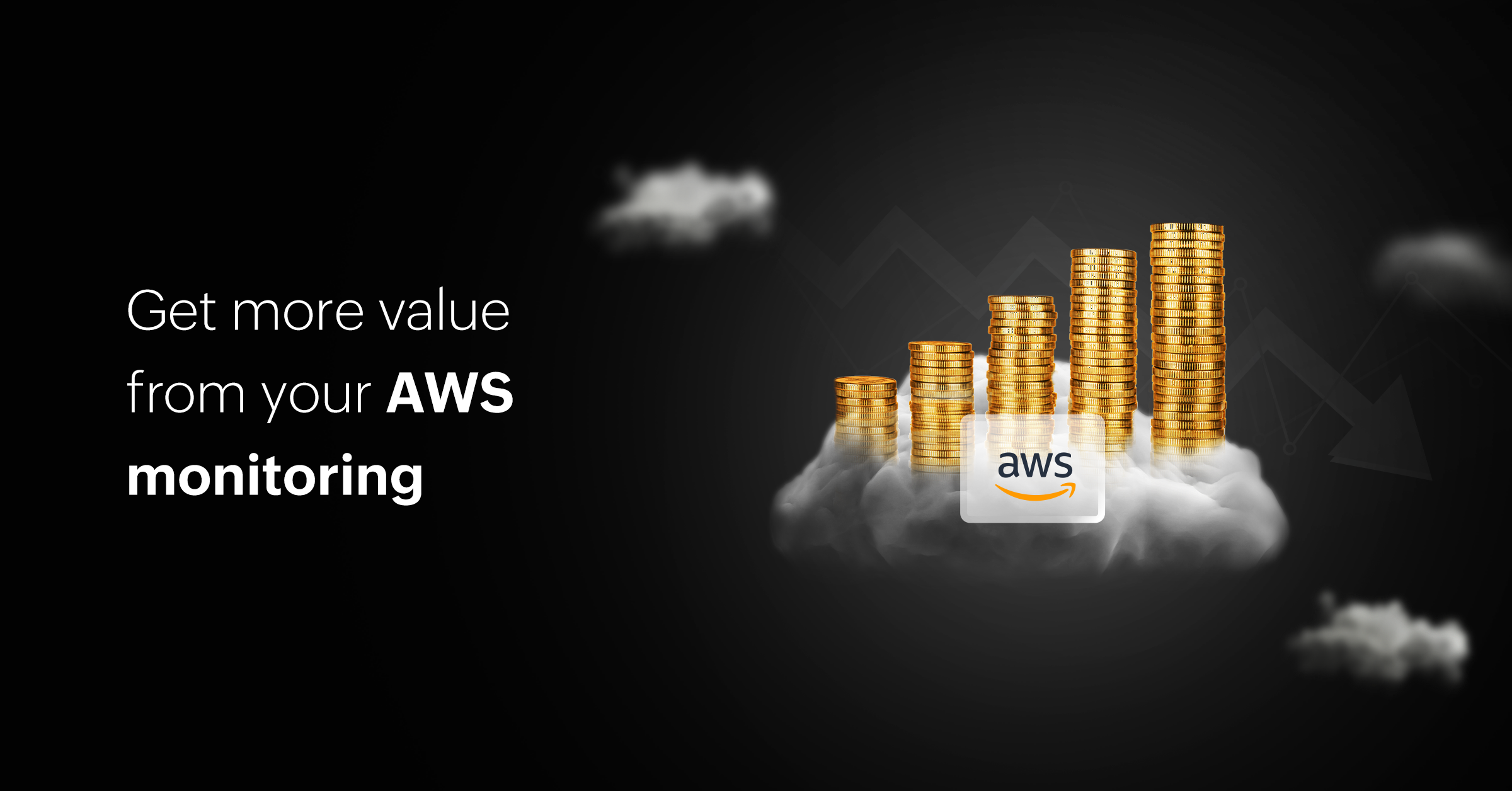Boosting your AWS monitoring ROI: Strategies that deliver

So, how do you actually do that? Let’s break it down.
What does ROI in AWS monitoring really mean?
At its core, ROI is about how much value you get back compared to what you spend. However, for AWS monitoring, it goes far beyond just cost savings. Maximizing ROI in AWS monitoring means:
- Fewer incidents and faster resolutions
- Smarter infrastructure spending
- Better availability and performance
- Increased productivity for your DevOps team
- Improved user experiences
The hidden cost of not monitoring effectively
Before diving into how to improve ROI, let’s quickly highlight what happens when monitoring is neglected or poorly implemented:
- Downtime: Every minute your app or service is down, you lose revenue and customer trust.
- Resource waste: Without visibility, you might be overprovisioning EC2 instances, paying for unused RDS storage, or missing idle load balancers.
- Security risks: Missed anomalies could signal breaches or misconfigurations.
- Slow troubleshooting: Without a centralized view of logs and metrics, identifying the root cause can take hours or even days.
- DevOps burnout: Teams stuck firefighting issues that could’ve been prevented cost both productivity and morale.
Every one of these issues chips away at your AWS investment. Proper monitoring doesn’t just help you react—it helps you prevent.
Key strategies to maximize ROI in AWS monitoring
1. Prioritize end-to-end visibility
Teams often only monitor a piece of the puzzle—like EC2 or Lambda—and miss everything else. However, full-stack observability gives you more context and leads to faster problem resolution. To maximize ROI:
- Monitor across infrastructure, applications, networks, and the user experience.
- Use unified dashboards and correlated insights.
- Track metrics, logs, traces, and real-time user behavior together.
2. Set up proactive alerting
A good monitoring setup doesn’t just tell you something broke—it warns you before it happens. Prioritize alerts by impact and urgency to keep teams focused.
- Use anomaly detection to catch early signs of trouble.
- Set up thresholds for CPU, memory, latency, and custom business metrics.
- Fine-tune alerts to reduce noise and highlight what matters.
3. Use automation and AIOps
Manual responses are slow and error-prone. Automation helps you act fast—and smart. It also frees up your team to focus on innovation.
- Auto-remediate common issues like restarting services or adjusting scaling.
- Use AIOps to analyze patterns and predict outages or cost spikes.
4. Optimize resource utilization
Monitoring isn’t just about uptime—it’s about cost savings too. You can use insights to:
- Right-size EC2, RDS, and container resources.
- Identify underused services and shut them down.
- Monitor cost drivers like data transfer and storage.
5. Monitor what matters to your business
Not every metric is worth tracking. Focus on KPIs that impact the user experience and business goals, like:
- API response times
- Shopping cart error rates
- Conversion funnel drop-offs
- Database query performance
Monitoring is an investment, not a cost
Maximizing ROI in AWS monitoring isn’t just about watching metrics—it’s about unlocking the full potential of your cloud investment. With the right strategies and tools, you can cut costs, reduce downtime, speed up issue resolution, and keep your teams focused on delivering value.
Site24x7 offers comprehensive AWS monitoring , full-stack observability, AI-powered insights, and built-in cost optimization features to help you monitor smarter and operate more efficiently. CloudSpend's ROI Calculator helps you evaluate whether your cloud setup is delivering the expected financial returns and identifies areas for cost optimization. By turning raw data into actionable intelligence, these tools enable you to gain deeper visibility, reduce cloud spend, and maximize the business value of your AWS environment.